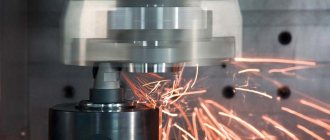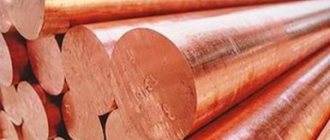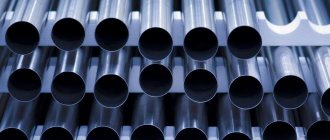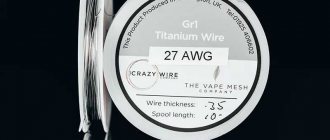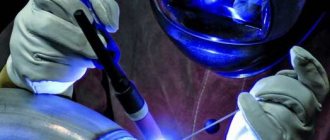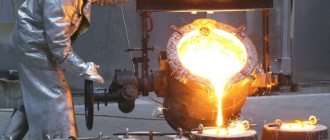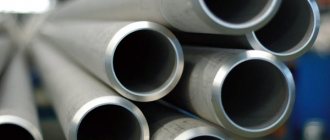Types of steel 200 series
Rolled stainless steel of this group is known under the brand name 201. AISI 201 sheet is similar in properties to the 300 and 400 series, but contains less expensive nickel and more manganese. Due to this, stainless steel 201 is cheaper than its analogues. Such a replacement does not impair its strength, ductility, or corrosion resistance.
The alloying elements here are copper, manganese, nickel, chromium, nitrogen and carbon. The Russian analogue is 12x15g9nd.
Mechanical and technological properties:
- resistance to high/low temperatures
- low corrosion rate
- resistance to mechanical damage and cracking
- suitable for forging
- welds well at temperatures up to 800 degrees
- increased plasticity allows the use of drawing and broaching technologies.
Stainless steel sheet AISI 201 is applicable:
- for the manufacture of cutlery, food industry equipment, food storage containers, water - thermoses, tanks, flasks
- in the cladding of building structures - elements of stairs, window frames
- for car parts - body trim, bumpers
How to choose the right stainless steel chimney.
So, first things first.
Modern steel chimneys are made, as a rule, double-circuit, i.e. consist of an inner and outer pipe separated by a layer of heat-insulating material. If the outer pipe is largely a decorative element that determines the appearance of the chimney, then its most important characteristics such as fire safety, reliability, and service life depend on the properties of the inner pipe. A ceramic pipe or a stainless steel pipe can be used as an internal pipe.
Let's take a closer look at the inner tube made of stainless steel. What kind of material is stainless steel and what are its features?
The key components of stainless steel are chromium and nickel, which determine its basic properties. Other alloying elements are also important. For example, the presence of a small amount of titanium (0.1-0.3%) in stainless steel improves the long-term strength of steel at high temperatures and makes it possible to use it for the manufacture of chimneys from solid fuel heating equipment (fireplaces, stoves, etc.). At high temperatures, titanium prevents carbon burnout and eliminates intergranular (intergranular) corrosion.
In addition to the structure and chemical composition, the crystalline structure, which should be uniform and fine-grained, has a great influence on the resistance of the chimney to corrosion. The condition of the surface, which must be clean and smooth, is also very important.
The optimal materials in terms of price-quality ratio for the manufacture of the internal chimney pipe are heat-resistant corrosion-resistant steel grades AISI 409 or AISI 439 with a thickness of 0.8-1.0 mm. Steels AISI 409, AISI 439 are nickel-free stainless steels of the ferritic class. Both steels are alloyed, including titanium, and are analogues of domestic grades 08Х13 and 08Х17Т (according to GOST 5632-72). Steels have a balanced chemical composition, providing corrosion resistance in most oxidizing environments and resistance to intergranular corrosion.
AISI 409 steel has good resistance to scale formation up to 700°C. Classified as heat resistant for intermittent use up to 815°C and for continuous use up to 700°C. Creep is not observed up to 500°C, but above this temperature the mechanical properties of the metal quickly degrade. In the presence of high loads, as well as at temperatures above 500°C, it is recommended to use other, more heat-resistant steels.
AISI 439 steel has better resistance to high-temperature gas environments formed during the combustion of various types of fuel, due to the higher (in accordance with ASTM A240 standard) chromium content of 17-19%, versus 10.5-11.7% in AISI 409 steel The corrosion resistance of AISI 439 steel is almost comparable to the resistance of austenitic steels, such as the domestic grade 12Х18Н10Т, or AISI 304, etc. In combination with a reduced carbon content, the presence of titanium and aluminum in AISI 439 steel provides it with high plastic and strength properties similar to more expensive nickel-containing grades of the 300 series, as well as higher structural stability during welding and heating. AISI 439 steel is absolutely resistant to corrosive intercrystalline destruction at temperatures from 500° to 850°C. It is heat-resistant and allows long-term operation at temperatures up to 850°C. Degradation of mechanical properties at temperatures above 500°C manifests itself to a lesser extent than that of steels of a similar type. By analogy with the domestic steel grade 08Х17Т, AISI 439 steel, according to GOST 5632-72, can be recommended as a substitute for steel grades 12Х18Н10Т and 12Х18Н9Т.
As a result, based on the totality of properties, the most optimal material for the manufacture of the inner pipe of a steel double-circuit chimney is AISI 439 steel.
But no matter how high corrosion resistance a particular steel has, under the influence of high temperatures and the aggressive environment of flue gases, wear of the inner surface of the pipe is inevitable. It is precisely because of the wear and tear of the inner pipe that the service life of the chimney is limited in time. Obviously, a chimney with an inner pipe made of thinner metal will become unusable earlier than its counterpart with a thicker metal. Thus, increasing the metal thickness from 0.8 to 1.0 mm extends the service life of the chimney by at least 20%. That is why, in the production of stainless chimneys, AISI 439 steel 1 mm thick is used for the internal contour.
No less important are the properties of the thermal insulation material separating the inner and outer chimney pipes. This material must have certain properties:
- be resistant to prolonged exposure to high temperatures up to 700°C;
- during operation, do not emit substances harmful to human health;
- have low thermal conductivity (optimally up to 0.038 W/mK).
There are several materials that are most suitable for this purpose. For example, thermal insulation material based on basalt superfine fiber (BSF). Stitched mats (canvases) are made from it, which are used as a heat insulator. BSFF is obtained from rock melts at a temperature of 1450-1550°C (the same temperature in the crater of an active volcano). Basalt fiber does not burn, it only melts in the zone of the specified high temperatures, without emitting toxic gases and compounds. Temperature at which it is permissible to use mats and canvases made from BSTV: from -270°C to +900°C. The high elasticity and long length of superfine basalt fibers guarantee their strong weave. Bonding of BSFF with each other occurs through natural adhesion and does not require the use of binders. The thermal conductivity of thermal insulation made from superthin basalt fiber of different types and brands ranges from 0.033 W/mK to 0.038 W/mK (at 25°C).
In cases where the temperature of combustion products exceeds 500-600°C, it is recommended to use ceramic thermal insulation, which does not lose its thermal insulation properties even when heated to 1000°C. For example, it uses Careblanket ceramic wool as thermal insulation.
Careblanket is a fire-resistant asbestos-free material with a density from 64 to 160 kg/m3, with an operating temperature of up to 1425°C. Like basalt fiber, it does not burn, it only melts at a temperature of 1600°C, without releasing toxic gases and compounds. It has high mechanical strength, flexibility, and exhibits excellent thermal insulation properties. Chemically resistant to all hydrocarbons, including oils, acids, alkalis and water. The material is also resistant to sudden temperature changes. The thermal conductivity coefficient of ceramic wool products of different types and brands ranges from 0.025 W/mK to 0.043 W/mK (at 1000°C).
Unfortunately, today materials such as glass wool, slag wool, heat-insulating elements molded from them and asbestos-containing materials are still used. These materials bind glass fibers (or slag fibers) using various resins (mainly phenolic-based), which pose a serious threat to human health if their concentration in the air exceeds the maximum permissible concentration. And probably everyone knows about the dangers of asbestos dust.
In addition to the targeted selection of environmentally friendly materials, it is also necessary to select the optimal thickness of the thermal insulation layer. Too thin will be ineffective, while thick will make the chimney heavier and increase its cost. Effective thermal insulation is especially important in conditions where the chimney is installed from the outside of the building. This prevents the formation of condensation, which, when mixed with combustion products, can cause damage to the chimney. In addition, the outer pipe with an insulating layer prevents the inner pipe from freezing. Operating experience has shown that the most effective and justified today is the use of heat-insulating material with a layer thickness of 30-40 mm and a density of 90-120 kg/m3.
Please note that the use of basalt or ceramic thermal insulation in pipes for the removal of combustion products does not exclude the use of fire safety measures when installing and servicing chimneys!
As for the outer chimney pipe, there are no special requirements for it. Corrosion resistance in the surrounding atmosphere and proper appearance - these are the characteristics the outer pipe material must have. The most suitable option is AISI 430 steel with a mirror polished surface. AISI 430 is a low-carbon iron-chromium stainless steel and has good corrosion resistance in mildly corrosive environments.
Another very important aspect that few people pay attention to is the way the chimney elements are connected to each other. Clause 4.39.6 of GOST 53321-2009 states: “The smoke duct must have a flat, smooth inner surface that does not interfere with cleaning.” Therefore, at the junction points, the diameter of the chimney should not decrease. A local reduction in the diameter of the chimney leads to disruption of the laminar movement of flue gases and turbulization of their flow. This worsens the draft in the chimney, soot settles in narrowing areas, and problems arise with cleaning them. The so-called “bell-type joining system” is free from this drawback. In this case, the ends of the pipes are molded with a change in their diameters in such a way that the pipes fit tightly into one another, forming a smooth inner surface. Special ring stops make it possible to obtain a pipe connection that virtually eliminates the penetration of flue gases through it.
These are the main criteria that you should consider when choosing a chimney. Quality products are always certified! Don’t forget to ask manufacturers for certificates for their products.
Fireplaces&Stoves magazine No. 3(30) (July-January 2015)
AISI steel 300 series
In this group, we can distinguish brands that differ in the ratio of chromium, nickel, carbon and titanium.
Depending on their composition, they are divided into austenitic-ferritic, austenitic, and austenitic-martensitic classes. This series has universal properties, therefore it is in demand in different directions.
AISI 304
This brand has been dubbed “food”, although it is used in other areas of industry no less. It has increased heat-resistant and anti-corrosion properties.
Suitable for all types of processing: welding, drawing, rolling, forging, shape molding, plasma or laser cutting.
Composition of AISI 304:
- C <0.08%
- Mn <2.0%
- P <0.045%
- S <0.03%
- Cr 18.0-20%
- Ni 8.0-10.5%
The scope of application is not limited to the food sector; durable, strong steel is made of:
- exhaust pipes
- pipe products, furnace equipment elements
- containers, vessels of the chemical, pharmaceutical industry, operating at temperatures from 200 to 650 degrees
- tanks for oil refineries
AISI 304 stainless steel can be purchased in sheet or roll form. The preferred format is determined only by the wishes of the customer; the quality of the product does not change.
Russian equivalent - steel 08x18x10
AISI 316
Stainless steel 316 is available with the addition of molybdenum. This is a chemical element that increases the material’s resistance to corrosion and resistance to elevated temperatures. Steel 316 is more expensive than AISI 304. It is actively used by shipbuilding, aviation, and oil and gas enterprises.
Analogue from Russian manufacturers - 10x17n13m2
AISI 316T
316T stainless steel is enriched with titanium, which gives the metal the ability to resist the damaging effects of chlorine. It also strengthens and improves heat-resistant characteristics. Unlike 304 grade, this one has no magnetic properties.
Main areas of use:
- production of gas turbine blades
- special equipment for chemical and pharmaceutical industries
- construction of heat exchangers of various sizes
- architectural elements
- details of roofing structures
Russian brand - 10x17n13m2t
AISI 321
An improved version of the previous type with an increased titanium content, here it contains 10%, which indicates even greater strength and hardness of this material. It is easy to weld and can withstand temperatures up to 880 degrees.
AISI 321 steel is used in:
- production of seamless pipe products
- production of flanges, transition elements
- shipbuilding, mechanical engineering
- boiler manufacturing
- construction of furnace systems
- production of heating elements
- aviation industry
Brand of Russian manufacturers - 12-08x18n10t
Properties aisi 439 430
So, despite the fact that these grades of stainless steel belong to the same class - ferritic, chromium, corrosion-resistant and heat-resistant steel, differences in the percentage of alloying additives in the alloys greatly affect their properties, and it is necessary to use stainless steel 439 or 430 in accordance with the requirements for their operation. For example, the presence of chromium in 13% or more leads to the resistance of products in mildly aggressive environments, and over 17% in highly aggressive acids. Titanium in 439 steel provides increased strength and resistance to loads.
When choosing structures and elements for production, and making a decision - stainless steel 439 or 430, you must be guided, first of all, by the conditions of the intended operation.
Despite the fact that these steels are both heat-resistant, AISI 439 is characterized by heat resistance without loss of its properties, when used in conditions up to 850 °C. A 430 can withstand 750 °C with continuous exposure, and 850 °C with intermittent exposure (although when operating at 425-525 °C for more than 100 hours, the steel becomes brittle). The presence of aluminum in the composition gives increased resistance to high temperatures to 439 steel.
The nickel content in alloy 439 defines the steel as weakly magnetic, which is also important for the manufacture of structures. Despite the fact that 430 does not contain nickel, it is successfully replaced by manganese and nitrogen, which makes it possible to classify this alloy as austenitic, and similar in properties to steels 304, 316.
Both steels, stainless steel 430 or 439, are distinguished by their high strength and high ductility, are easily welded and formed, and are subject to bending and stamping. Structures made from them are characterized by reliability and long service life.
Mechanical restoration
AISI 430 stainless steel is relatively easy to process. Machining can be improved by well sharpening the cutting tool to avoid excessive hardening at the machining areas. The impact on the processed surface of AISI 430 steel products should be light, but deep enough to prevent hardening when passing over the surface of the material. Just like when machining austenitic steels, when machining AISI 430 steel it is useful to use coolants.
National Standard of the Russian Federation:
Steel is an alloy of iron and carbon, the latter content in it being no more than 2.14%, and iron content more than 50%. Carbon gives the alloy hardness, but if it is in excess, the metal becomes too brittle.
One of the most important parameters by which steels are divided into different classes is the chemical composition. Among the steels according to this criterion, alloyed and carbon steels are distinguished, the latter are divided into low-carbon (carbon up to 0.25%), medium-carbon (0.25–0.6%) and high-carbon (they contain more than 0.6% carbon).
Steel is subject to mandatory marking.
To clarify information on a specific steel grade, so-called grade markers can be used. 2nd (2003) and 3rd (2011) editions of the “Marker of Steels and Alloys”, ed. A. S. Zubchenko contain a description of about 600 grades of steels and ferrous alloys, the 4th (2014) edition - more than 700 grades.
Alloy steels, in contrast to unalloyed steels, have a slightly different designation, since they contain elements that are specially introduced in certain quantities to provide the required physical or mechanical properties. Eg:
- chromium (Cr) increases hardness and strength
- Nickel (Ni) provides corrosion resistance and increases hardenability
- Cobalt (Co) improves heat resistance and increases impact resistance
- Niobium (Nb) helps improve acid resistance and reduces corrosion in welded structures.
Deciphering steel grades requires knowing what letters are used to denote certain chemical elements that make up the grade or alloy.
If at the very end of the brand there is the letter A, then this means high-quality steel, the content of phosphorus and sulfur in which is reduced to a minimum. Two letters A at the very end (AA) indicate that this grade of steel is especially pure, that is, there is practically no sulfur and phosphorus in it.
The letter designations “kp”, “ps”, “sp” are used to indicate the degree of steel deoxidation:
- "kp" - boiling
- "ps" - semi-calm
- "sp" - calm
An example of decoding steel grade 12Х18Н10Т
12Х18Н10Т is a popular steel (corrosion-resistant, heat-resistant austenitic class), which is used in welding machines and vessels operating in dilute acid solutions, in solutions of alkalis and salts, as well as in parts operating under pressure at temperatures from -196°C up to +600°C[7].
The two numbers at the very beginning of the alloy steel grade are the average carbon content in hundredths of a percent. In this example the carbon content is 0.12%. If instead of two numbers there is one, then it shows how much carbon (C) is contained in tenths of a percent. If there are no numbers at the beginning of the steel grade, then it contains 1% carbon or more.
The letter X and the number 18 following it indicate that this brand contains 18% chromium. The ratio of an element in fractions of a percent expresses only the first number at the beginning of the mark, and this applies only to carbon. All other numbers in the brand name express the number of specific elements as a percentage.
Next comes the H10 combination, which is 10% nickel.
At the very end there is the letter T without any numbers. This means that the content of the element is low, usually about 1% (sometimes up to 1.5%). In this grade of alloy steel, the amount of titanium does not exceed 1.5%.
So, steel grade 12Х18Н10Т (structural cryogenic, austenitic class) contains the following information: 0.12% carbon, 18% chromium (X), 10% nickel (H) and a small titanium content (T), not exceeding 1.5%.
Next, I will consider only those steels from which chimneys are made.
I'll start with the most popular steel, which is used for the production of chimneys and which consumers adore.
So, the stainless steel is mirror-like.
In principle, almost all stainless steel that is used for the production of chimneys is mirrored, but this one is SUPER mirrored.
Stainless steel AISI 430 (12X17) is mirror-like, high-quality stainless steel, but the MAGNET sticks to it, how can that be?
Operation in the temperature range of 425 -525oC for more than 100 hours will make the steel brittle at room temperature.
AISI 430 is an imported, improved analogue of domestic steel 12×17. It contains an ultra-low amount of carbon (about 0.035% in fact). This carbon content ensures good weldability and prevents the susceptibility to intergranular corrosion (ICC) without titanium stabilization. This applies to both the base metal and the weld metal, subject to certain requirements for the preparation and welding technology.
According to data (ASM Metals Handbook, Avesta Sheffield Corrosion Handbook for Stainless Steels), the AISI 430 grade is resistant to any atmospheric corrosion, to corrosion in water and in pure water vapor up to 120 C, as well as in natural gas combustion products.
AISI 430 has 1 point (perfectly stable - the highest point on a 10-point scale) of corrosion resistance in nitric acid concentrations of 20, 50, 60% up to 50 ° C; aqueous solutions of ammonia of all concentrations up to 100°C; in a mixture of acids (25% nitric and 75% sulfuric) up to 60°C. According to reference data (ASM Metals Handbook, Avesta Sheffield Corrosion Handbook for Stainless Steels), grade 430 steel has corrosion resistance in slightly alkaline environments - in a 20% KOH solution at a temperature of 20 °C and boiling, a 50% KOH solution at a temperature of 20 °C and in NaOH solution with a concentration of 25% at a temperature of 20 °C.
Pay attention to the temperature of use.
The answer is simple: this AISI 430 steel is not suitable for chimneys.
Now, as usual, questions, you are wondering, what if you still try to use AISI 430
Will this steel serve as a chimney? Yes. will.
How long will a chimney made of this steel last? From 1 year to 5 years, maybe more, depending on operating conditions.
Can it last more than 10 years? Yes maybe. But maybe less.
What will the service life depend on? From the temperature of the flue gases and the number of on and off cycles and the frequency of these cycles. You can go deeper into why the frequency of cycles affects the service life of the chimney, etc.... if you want to know, call 89608088884 (Sergey).
What can this steel be used for?
Only for the external contour of the sandwich pipe and then with tension. the external circuit of a sandwich can heat up to 200 C. (the flue gas temperature of solid fuel stoves ranges from 150 to 1000 C, depending on the design of the stoves, fuel, combustion modes, and accordingly the external circuit will heat up).
Welding characteristics
To weld this material, you can easily use any welding method. The most important thing is to carry out post-welding actions, which include pickling. In this case, the corrosion properties at the welding seam will not be lost. It is best to use arc welding in inert gases; the most important thing is to maintain the minimum energy input into the welded seam. In this case, austenite wire or electrodes with filler wire based on chromium steel AISI 439 can be used as a filler material in this case.
To ensure corrosion resistance, it is essential to remove scale using pickling.
Percentage content of chemical elements in various grades of steel
| AISI | GOST | WITH | MP | Si | Cr | Ni | Mo | Ti |
| 201 | 12X15G9ND | 0.15 | 5.5-7.5 | 1 | 16 | 1 | — | — |
| 430 | 12X17 | 0.12 | 0.8 | 0.8 | 16 | — | — | — |
| 439 | 08Х17Т | 0.08 | 0.08 | 0.8 | 17 | — | — | 1 |
| 444 | 02Х18М2БТ | 0.02 | 0.75 | 1 | 17 | — | 2 | 1 |
| 304 | 08Х18Н10 | 0.08 | 0.2 | 0.8 | 17 | 9 | — | — |
| 321 | 08Х18Н10Т | 0.08 | 2 | 0.8 | 17 | 9 | — | 1 |
| 316L | 03X16H15M3 | 0.03 | 0.8 | 0.6 | 17 | 14 | 2 | — |
| 310S | 20Х23Н18 | 0.1 | 2 | 1.5 | 24 | 20 | — | — |
Marking of stainless steels GOST
| steel grade | Characteristic | Chemical composition, % |
| 06ХН28МДТ (analogue: AISI 904L) | Stainless steel is used for the manufacture of welded chemical equipment operating at temperatures up to 80 degrees in highly aggressive environments. | Ni 26-29; Cr 22-25; Cu 2.5-3.5; Mo 2.5-3; Si ≤0.8; Mn ≤0.8; Ti 0.5-0.9; C ≤0.06; P ≤0.035; S ≤0.02; Fe rest. |
| 08Х17Н13М2Т (analogue: AISI 316Ti) | Stainless steel of this grade is characterized by high ductility, is easily molded and does not have magnetic properties. | C up to 0.08; Si up to 0.8; Mn up to 2; Ni 12-14; S up to 0.02; P up to 0.035; Cr 16-18; Mo 2-3; Cu up to 0.3; (5 C-0.7) Ti ; Fe ≈61 |
| 08Х18Н9 | Austenitic stainless steel with high chromium content. It is used in the production of steel seams, fittings, and heat exchange equipment. | Cr 17-19; Ni 8-10; C 0.8; Si 0.8; Ti 0.5; Cu 0.3; Mn 0.2; P 0.035; S 0.02 |
| 08Х18Н10 (analogue: AISI 304) | This stainless steel is characterized by increased strength, ductility and resistance to ultra-high temperatures. The alloy has no magnetic properties. | Cr 17-19; Ni 9-11; C 0.8; Si 0.8; Ti 0.5; Cu 0.3; Mn 0.2; P 0.035; S 0.02 |
| 08Х18Н10Т (analogue: AISI 321) | Characterized by high heat resistance. There are no magnetic properties. It is used for the manufacture of folds, heat exchange equipment, and parts of furnace fittings. | Cr 17-19; Ni 9-11; Mn up to 2; Si up to 0.8; Ti 0.4-0.7; Cu up to 0.3; S up to 0.2; C up to 0.08; P up to 0.035; Fe ≈69 |
| 08Х22Н6Т | Belongs to the austenitic-ferritic group of alloys. Does not lose its properties even when used in an aggressive environment. | Cr 21-23; Si up to 0.8; Mn up to 0.8; Ni up to 0.8; Cu up to 0.3; C up to 0.08; P up to 0.035; S up to 0.025; (5 C - 0.65) Ti ; the rest is Fe |
| 10Х17Н13М2Т (analogue: AISI 316Ti) | Stainless steel retains its physical properties and characteristics even at high temperatures (up to 600 degrees). | Cr 16-18; Ni 12-14; Mo 2-3; Mn no more than 2; Si no more than 0.8; Ti 0.5-0.7; Cu not more than 0.3; P not more than 0.035; S no more than 0.02 |
| 10Х18Н10Т | Heat-resistant stainless steel is used for the manufacture of parts for welded equipment operating in aggressive environments. Suitable for the production of furnace equipment, heat exchangers and pipes. | Cr 17-19; Ni 10-11; Mn 1-2; Si up to 0.8; C up to 0.1; P up to 0.035; S up to 0.02; 5(C - 0.02) < Ti < 0.6 |
| 10Х23Н18 (analogue: AISI 310S) | High-alloy, high-temperature resistant stainless steel belongs to the austenitic group of alloys. | Cr 22-25; Ni 17-20; Mn up to 2; Si up to 1; Cu 0.035; Ti 0.3; C up to 0.1; S up to 0.02; P up to 0.02 |
| 12Х18Н9 (analogues: AISI 301, 302, 303, S30200) | Belongs to the group of austenitic alloys. It is used in the manufacture of parts that subsequently undergo a hardening stage: parts of furnace fittings, heat exchangers, rotors, couplings. | Cr 17-19; Ni 8-10; Mn ≤ 2; Si ≤ 0.8; Ti ≤0.5; Mo ≤0.5; Cu ≤0.3; C ≤ 0.12; P ≤0.035; S ≤0.02; Fe about 70 |
| 12Х18Н10Т (analogues: AISI 321, 321H) | Austenitic grade stainless steel. It is used in the food, pharmaceutical and chemical industries, petrochemical industry, mechanical engineering, and energy. | Cr 17-19; Ni 9-11; Mn no more than 2; Si no more than 0.8; Ti 0.6-0.8; Cu not more than 0.3; P not more than 0.035; S no more than 0.02 |
| 12Х18Н12Т | High-alloy steel is used in the manufacture of parts operating at elevated temperatures. Use in aggressive environments is allowed. | Cr 17-19; Ni 11 - 13; Mn up to 2; Si up to 0.8; Cu up to 0.3; C up to 0.12; P up to 0.035; S up to 0.02; (5 C - 0.7) Ti ; the rest is Fe |
| 14Х17Н2 (analogue: AISI 431) | Belongs to the martensitic-ferritic group of alloys. This stainless steel is difficult to weld and is prone to temper brittleness. | Cr 16-18; Ni 1.5-2.5; Si 0.8; Mn 0.8; Cu 0.3; C 0.11-0.17; P 0.03; Ti 0.2 |
| 20Х23Н18 (analogue: AISI 310) | High-alloy heat-resistant steel. Used for the production of individual combustion chambers, clamps, suspensions, and fastening parts. Seamless pipes are also made from steel of this grade, which will be used at high temperatures. | Cr 22-25; Ni 17-20; Mn no more than 2; Si no more than 1; Cu not more than 0.3; Ti no more than 0.2; P not more than 0.035; S no more than 0.02 |
| 08Х13 (analogues: AISI 403, 409, 410S, 429) | Belongs to the group of ferritic alloys. Steel has good corrosion resistance and can withstand high temperatures. | Cr 12-14; Si 0.8; Mn 0.8; Ni 0.6; C 0.08; P 0.03; S 0.025 |
| 08Х17 (analogue: AISI 430) | Characterized by a high chromium content. Used in mechanical engineering, food and chemical industries. | Cr 16-18; Si 0.8; Mn 0.8; Ni 0.6; C 0.08; P 0.03; S 0.025 |
| 12Х13 (analogue: AISI 410) | Brittle steel that is difficult to weld. Belongs to the martensitic-ferritic class. | Cr 12-14; Si 0.8; Mn 0.8; Ni 0.6; C 0.1; P 0.03; S 0.025 |
| 12Х17 (analogue: AISI 430) | Belongs to the ferritic group. Does not lose its properties, even when exposed to acids and salt solutions. | Cr 16-18; Si 0.8; Mn 0.8; C 0.12; P 0.035; S 0.025 |
| 20Х13 (analogue: AISI 420) | It belongs to the martensitic class of alloys and is intended for the manufacture of power engineering parts, furnace equipment, various fasteners and fittings. This stainless steel is difficult to weld and is prone to temper brittleness. | Cr 12-14; Si 0.6; Mn 0.6; Ni 0.6; C 0.2; P 0.033; S 0.025 |
| 30Х13 (analogues: AISI 420S, 420F) | This steel is not suitable for welding. It is used for the manufacture of springs, compressor parts and other devices. | Cr 12-14; Si 0.8; Mn 0.8; Ni 0.6; C 0.3; Cu 0.3; Ti 0.2; P 0.03; S 0.025 |
| 40Х13 (analogue: AISI 420) | Stainless steel made from this alloy is distinguished by its high level of wear resistance and heat resistance. It is used for the manufacture of cutting and measuring tools, as well as compressor parts that operate at high temperatures. | Cr 12-14; Si 0.6; Mn 0.6; C 0.4; P 0.03; S 0.025 |
Application of stainless steel
The main applications of stainless steel include:
- Mechanical engineering.
- Chemical industry.
- Energy.
- Pulp and paper industry.
- Food industry.
- Medicine.
- Aerospace sector.
- Construction.
Due to its practicality and pleasant appearance, stainless steel has become widespread. The advantages also include a variety of stainless steel grades and surface types (ground, polished, matte, glossy and even colored surfaces). The appearance of stainless steel elements does not change for decades. Stainless steel also has higher heat-resistant properties than other steels.
In construction, stainless steel is used primarily as a material for the manufacture of finishing elements: railings, window and door openings, fire doors. It is also a good decorative material for equipping restaurants, offices, pubs, discos and metro stations. In everyday life, stainless steel in combination with glass or wood is found in furniture elements.
Special food grade steel is produced for the food industry. Such alloys are distinguished by a low amount of chemical additives and have the following markings: AISI 304, AISI 304L, AISI 316, AISI 316L, AISI 316Ti, AISI 321, AISI 430.
Medical stainless steel is needed for the manufacture of instruments, utensils and other devices. It is marked 12Х18Н10Т, and is distinguished by its high corrosion properties, absence of harmful substances, hardness and practicality.
There is a misconception that stainless steel is an expensive material. In fact, if you take into account the huge period of operation, the funds invested in it are fully recouped.
Corrosion resistance
AISI 430 has increased corrosion resistance in most aggressive environments, even in organic and inorganic acids, including nitric acid.
Optimal corrosion resistance of AISI 430 stainless steel is achieved when using polished steel, since in this case the surface in contact with an aggressive environment is minimized.
Like other ferritic (high iron content) alloys, AISI 430 stainless steel has high resistance to stress corrosion cracking.
Areas of use for AISI 439 and 430
It is rational to use steel 439 for the manufacture of structures, during the operation of which exposure to aggressive substances, both liquid and gaseous, is possible. Pipeline pipes are excellent for transporting acidic and saline media, for the manufacture of elements of exhaust system housings, exhaust gas recovery and recirculation equipment, the manufacture of heat exchangers, as well as for the manufacture of furnace parts and related elements for furnaces - chimneys, exhaust ducts, etc. And when choosing - chimney steel 430 or 439, AISI 439 obviously wins.
The greatest use of this steel is in the petrochemical and pharmaceutical industries, in the food, dairy, confectionery, baking and brewing industries, in the production of parts in the civil engineering and automotive industries.
AISI 430 alloy, due to its low cost, is widely in demand in various industries. It is used in the production of various parts of household appliances - tanks for washing machines, elements of dishwashers, refrigerator housings, and microwave ovens. This steel is excellent for the production of fasteners - rollers, bushings, hardware, etc.
In the food industry, out of 430, they produce pipeline systems, refrigeration and cooking equipment, various containers and tanks.


